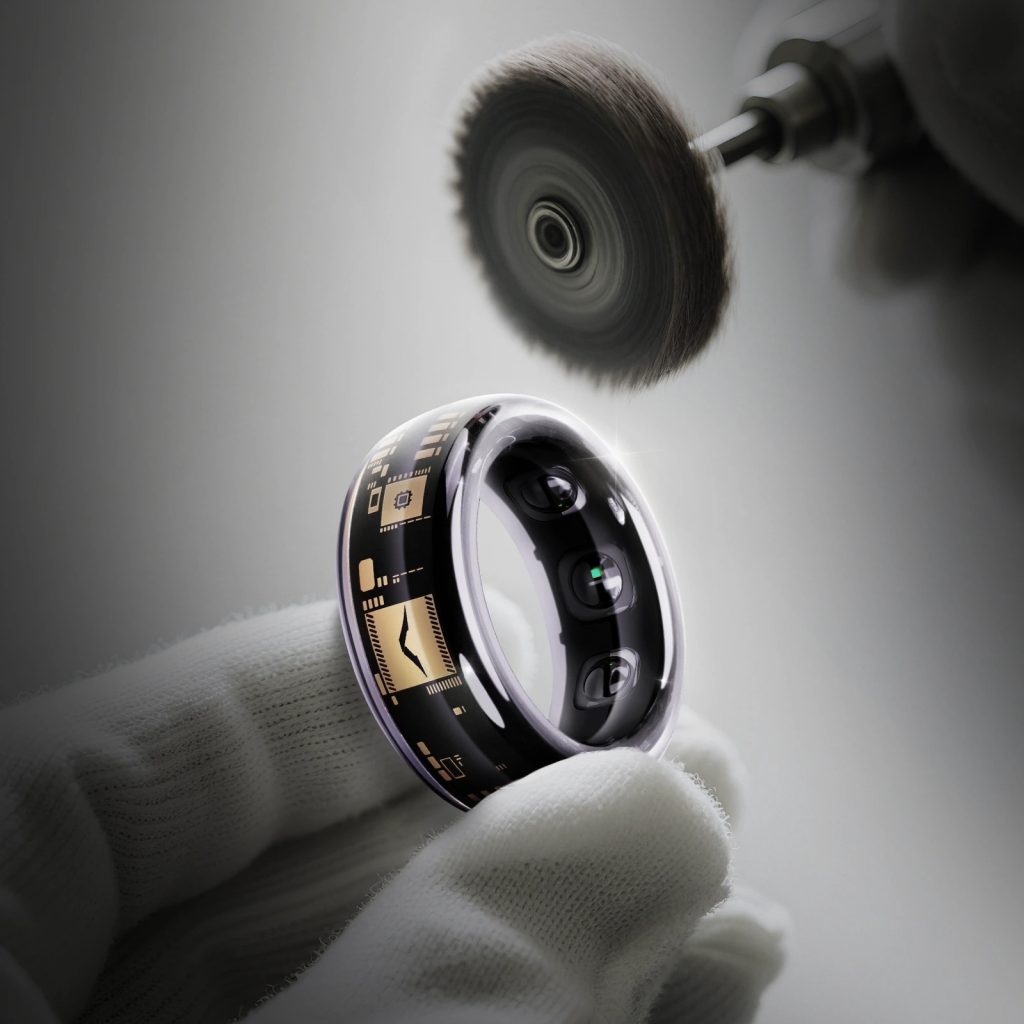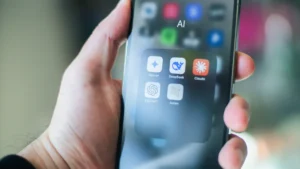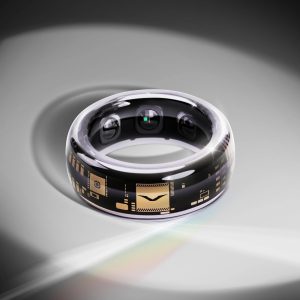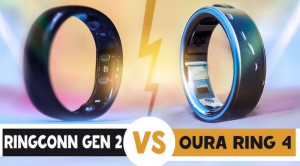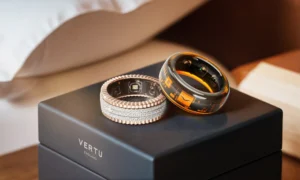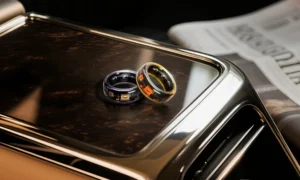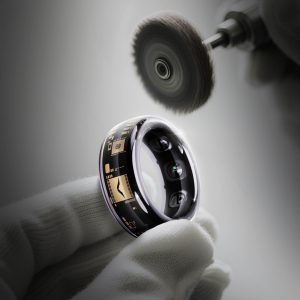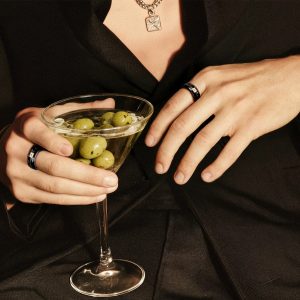Key Takeaways
Direct Answer: No, the Oura Ring is not classified as a medical device by the U.S. Food and Drug Administration (FDA). It lacks FDA clearance and approval, positioning it instead as a general wellness device designed for health monitoring and lifestyle optimization rather than medical diagnosis or treatment.
Critical Distinctions:
- Device Classification: Oura Ring operates as a general wellness product focused on maintaining healthy lifestyles, not diagnosing or treating medical conditions
- Regulatory Status: No FDA approval or 510(k) clearance required for consumer wellness wearables like Oura Ring
- Medical Integration: While Oura partners with Natural Cycles (an FDA-cleared birth control app), the ring itself remains unregulated and is not recommended to replace healthcare professional guidance
- FSA/HSA Eligibility: Despite not being a medical device, Oura Ring qualifies for FSA or HSA reimbursement, recognizing its health-related benefits
- Accuracy Considerations: Independent studies validate Oura Ring's accuracy in measuring sleep and heart rate, though clinical-grade precision isn't guaranteed across all metrics
What This Means for You: You can confidently use Oura Ring for wellness tracking, fitness optimization, and sleep improvement, but should not rely on it for medical diagnosis, treatment decisions, or replacing professional medical devices. For users seeking luxury wellness technology with similar capabilities, alternatives like the Vertu AI Ring combine premium health tracking with sophisticated design and AI-powered insights.
Understanding FDA Medical Device Classification
The FDA categorizes products into distinct regulatory pathways based on their intended use and risk profile. A medical device is defined as any “instrument, apparatus, implement, machine … or other similar or related article … intended for use in the diagnosis of disease or other health conditions” under Section 201(h) of the Federal Food, Drug & Cosmetic Act. This legal definition hinges critically on the manufacturer's stated purpose—specifically whether the device claims to diagnose, treat, cure, prevent, or mitigate disease.
Medical devices fall into three classes based on risk: Class I (lowest risk), Class II (moderate risk), and Class III (highest risk). Class I devices like tongue depressors require minimal regulation, while Class III devices such as pacemakers demand extensive premarket approval involving clinical trials and rigorous safety testing. Class II devices typically require 510(k) clearance focused on demonstrating equivalence to existing approved devices.
The regulatory boundary between medical devices and wellness products determines whether manufacturers must invest years and millions of dollars in FDA approval processes. General wellness devices promote healthy lifestyle choices that positively impact health outcomes without making disease-specific claims. This distinction allows innovative health technologies to reach consumers quickly while FDA resources focus on higher-risk medical interventions.
Understanding this classification framework clarifies why devices like Oura Ring, which monitor biometric data for general health awareness, operate legally without FDA oversight. The manufacturer intentionally positions the product for wellness rather than medical applications, avoiding claims about diagnosing conditions like sleep apnea, heart disease, or diabetes that would trigger regulatory requirements.
What Qualifies as a General Wellness Device
General wellness devices occupy a specific regulatory category that balances innovation accessibility with consumer safety. The FDA identifies two types of general wellness products: those intended to maintain or encourage a general state of health or healthy activity, and those associating healthy lifestyles with reducing disease risk. Critically, these devices must pose low risk to users—meaning they cannot present unreasonable risk of illness or injury even if they malfunction or provide inaccurate data.
The low-risk requirement distinguishes wellness wearables from medical-grade devices. A fitness tracker suggesting you didn't sleep well presents minimal safety concern compared to an insulin pump calculating incorrect dosages. Wellness devices provide informational feedback supporting lifestyle decisions rather than critical data driving medical interventions. This fundamental difference enables the FDA to exercise enforcement discretion, allowing these products to market without premarket clearance or approval.
Making healthy lifestyle choices positively impacts health outcomes, forming the foundation of wellness device philosophy. Devices tracking steps, sleep patterns, heart rate trends, or activity levels help users understand their bodies and make informed decisions about exercise, rest, and stress management. These insights support general health maintenance rather than addressing specific medical conditions requiring professional diagnosis and treatment.
Manufacturers must carefully craft their marketing claims to maintain wellness classification. Stating a device “helps you sleep better” falls within wellness parameters, while claiming it “diagnoses sleep apnea” triggers medical device regulation. This linguistic precision determines whether a company faces a straightforward market entry or a multi-year FDA approval process requiring clinical validation, quality system compliance, and ongoing regulatory reporting.
For users, recognizing this distinction helps set appropriate expectations. Wellness devices like Oura Ring provide valuable health awareness and trend identification but shouldn't substitute for medical equipment when actual health conditions require monitoring. Understanding the regulatory context empowers informed decisions about when wearable data warrants professional medical consultation.
Oura Ring's Specific Regulatory Position
The Oura Ring is not certified as a medical device by the U.S. Food and Drug Administration (FDA), lacking FDA clearance and approval that would classify it for clinical adoption. The company deliberately positions Oura as a wellness and lifestyle product designed to help healthy individuals optimize their sleep, recovery, activity, and overall well-being through biometric monitoring and personalized insights.
This intentional regulatory strategy allows Oura to rapidly innovate and release features without the extensive validation processes required for medical devices. The company can update algorithms, add new metrics, and refine personalization based on aggregated user data without submitting regulatory amendments or awaiting approval for each modification. This agility enables the continuous improvements and feature additions that subscription members receive through regular app updates.
Oura has partnered with Natural Cycles, an FDA-cleared birth control application, demonstrating how wellness devices can integrate with approved medical platforms. In this relationship, Natural Cycles holds the FDA clearance for contraceptive effectiveness claims while Oura simply provides temperature data as an input source. The ring itself makes no birth control claims, maintaining its wellness classification while enabling users to leverage its data within a medical context through third-party applications.
Despite lacking medical device status, Oura Ring qualifies as FSA or HSA eligible, an important distinction for health-conscious consumers. This eligibility reflects IRS guidelines allowing reimbursement for products that monitor or promote health even without FDA medical device classification. Users can apply pre-tax health savings toward the ring and subscription costs, partially offsetting the premium investment while recognizing the device's legitimate health benefits.
The regulatory positioning carries practical implications for clinical integration. Healthcare providers cannot prescribe Oura Ring as a medical device or rely on its data for formal diagnosis. Oura is not recommended to replace health management from healthcare professionals, serving instead as supplementary information patients might share during consultations. Progressive physicians increasingly welcome patient-generated health data from wellness devices as conversational starting points, though such information doesn't carry the clinical validation of medical-grade monitoring equipment.
How Oura Ring Differs from FDA-Approved Devices
Medical-grade wearables undergo rigorous validation demonstrating specific diagnostic or therapeutic capabilities that wellness devices don't claim. Bodimetrics, in partnership with Prevention, has created a smart ring with FDA approval for blood oxygen tracking across all skin tones, incorporating ECG sensors for heart rhythm analysis. This approval process required clinical studies proving measurement accuracy, skin tone inclusivity, and reliable detection of concerning health conditions like atrial fibrillation or hypoxemia.
The validation burden for FDA approval typically involves controlled clinical trials comparing device measurements against gold-standard medical equipment. For cardiovascular monitoring, this means simultaneous testing against hospital-grade ECG machines and pulse oximeters across diverse patient populations. Manufacturers must demonstrate not only that measurements are accurate but also that the device reliably identifies clinically significant abnormalities requiring medical attention.
Quality management systems represent another major distinction. FDA-regulated manufacturers must implement comprehensive quality controls including design validation, manufacturing process verification, supplier audits, complaint tracking, and corrective action protocols. Every device batch undergoes testing to ensure consistency and reliability. Post-market surveillance requirements mandate manufacturers to monitor device performance, report adverse events, and issue recalls if safety issues emerge.
Wellness devices like Oura Ring face no such requirements. While responsible manufacturers implement quality processes voluntarily, they aren't subject to FDA inspection or enforcement. The company can update sensor configurations, modify algorithms, or change manufacturing processes without regulatory notification or approval. This flexibility enables innovation but means users lack the regulatory oversight guarantees that FDA-cleared medical devices provide.
Clinical integration capabilities differ substantially. Medical-grade devices often include features enabling healthcare provider data access, integration with electronic health records, and clinically validated diagnostic thresholds. Research validating Oura Ring for applications like ovulation detection occurs independently of FDA review, with studies published in medical journals rather than submitted for regulatory clearance. Healthcare providers may reference such research when discussing patient data but cannot officially prescribe or bill for Oura as a medical monitoring device.
The legal liability framework also diverges significantly. FDA-regulated device manufacturers face strict regulatory consequences for safety issues, false claims, or quality failures, including warning letters, consent decrees, fines, and criminal prosecution. Wellness device manufacturers primarily face consumer protection and false advertising regulations rather than medical device-specific penalties. This difference reflects the varying risk profiles—a malfunctioning pacemaker poses life-threatening danger, while an inaccurate sleep tracker simply provides unhelpful information.
Medical vs. Wellness Device Comparison Table
| Aspect | FDA-Approved Medical Devices | General Wellness Devices (Oura Ring) |
|---|---|---|
| FDA Regulatory Status | Requires 510(k) clearance, PMA, or De Novo pathway | No FDA clearance or approval required |
| Intended Use | Diagnose, treat, cure, prevent, or mitigate disease | Maintain general health and encourage healthy activity |
| Clinical Validation | Mandatory clinical trials vs. gold-standard equipment | Optional research; independent validation studies |
| Risk Classification | Class I, II, or III based on patient risk | Low-risk; no reasonable risk of illness or injury |
| Measurement Standards | Must meet clinical accuracy specifications | Accuracy goals vary; no mandated thresholds |
| Quality System | Required: design controls, CAPA, audits, inspections | Voluntary; no FDA inspection requirement |
| Marketing Claims | Can claim specific diagnostic/therapeutic capabilities | Limited to general wellness and lifestyle statements |
| Healthcare Integration | Can be prescribed; billable; integrates with EHR | Supplementary information only; not prescribed |
| Post-Market Surveillance | Mandatory adverse event reporting and monitoring | Voluntary reporting; no regulatory requirement |
| Approval Timeline | Months to years depending on device class | Immediate market entry once product ready |
| Development Costs | $1M-$100M+ depending on complexity and class | Significantly lower without regulatory burden |
| Legal Liability | Strict FDA enforcement; regulatory consequences | Primarily consumer protection regulations |
| Clinical Evidence | Required for approval with specific protocols | Optional; varies by manufacturer commitment |
| Professional Recommendation | Physicians can officially prescribe | Informal suggestions only; not clinical tools |
| Insurance Coverage | Often covered for medical indications | Typically not covered; may be FSA/HSA eligible |
| Examples | Bodimetrics Ring (FDA-approved ECG/SpO2), continuous glucose monitors, sleep apnea devices | Oura Ring, Fitbit, Apple Watch (wellness features), Vertu AI Ring |
Oura Ring's Health Tracking Capabilities
Oura Ring collects over 20 biometric measurements from your finger, which provides the most accurate readings for many physiological parameters. The device continuously monitors heart rate, heart rate variability (HRV), blood oxygen saturation (SpO2), respiratory rate, and skin temperature variations throughout day and night. Advanced accelerometer and gyroscope sensors detect movement patterns, enabling automatic activity recognition and detailed sleep stage classification.
The ring's comprehensive sleep tracking breaks down your night into light sleep, deep sleep, REM sleep, and awake periods, analyzing total sleep time, sleep efficiency, and restfulness. Temperature sensors detect deviations from your baseline body temperature with 0.13°C accuracy, identifying potential illness onset, hormonal fluctuations, or training stress. These measurements combine algorithmically to generate daily readiness, sleep, and activity scores that synthesize complex biometric data into actionable guidance.
Independent studies have demonstrated Oura Ring's accuracy in measuring sleep and heart rate, with research showing strong correlation with polysomnography and medical-grade monitoring equipment. The finger-based measurement location offers advantages over wrist-worn devices for certain metrics, as fingers have more consistent blood flow and less movement artifact during sleep. This anatomical positioning contributes to Oura's reputation for reliable overnight biometric tracking.
Oura's subscription service unlocks advanced analytics including cardiovascular age estimation, stress resilience scoring, cycle tracking for women's health, and personalized activity recommendations adapting to your recovery status. The platform analyzes longitudinal trends identifying how lifestyle factors—alcohol consumption, exercise timing, sleep schedule consistency, stress levels—affect your physiology over weeks and months. Guided audio content for meditation and sleep further supports wellness optimization beyond pure data tracking.
The fourth-generation Oura Ring introduced Smart Sensing technology that dynamically adjusts sensor algorithms based on ring placement, finger size, and contact quality. This adaptive approach maintains measurement accuracy despite varying conditions including temperature fluctuations, intense exercise, or imperfect ring positioning. Continuous algorithm refinement leverages aggregated data from millions of users to improve pattern recognition and personalization.
While Oura excels at wellness monitoring, its lack of medical device status means certain limitations apply. The device cannot replace medical equipment for diagnosing sleep disorders, cardiovascular conditions, or respiratory problems. Healthcare providers may find patient-shared Oura data interesting but cannot rely on it for clinical decision-making without corroborating evidence from approved diagnostic tools. Users experiencing concerning symptoms should pursue proper medical evaluation rather than assuming wearable data provides diagnostic clarity.
Premium Alternative: Vertu AI Ring
For users seeking luxury health monitoring that transcends basic wellness tracking, the Vertu AI Ring represents the convergence of sophisticated design and advanced biometric technology. The Vertu AI Diamond Ring combines smart health tracking with modern technology and classic aesthetics, featuring biometric sensors that track health metrics in real-time including heart rate, oxygen levels, and sleep quality using advanced PPG technology.
Vertu seamlessly integrates cutting-edge technology within luxurious design, discreetly monitoring health while maintaining elegance through features like real-time health tracking, health data analysis, emotion management, and personalized insights. The distinctive turnable double-layered ring design with rotating diamonds creates both visual appeal and symbolic meaning, representing fortune and vitality while housing comprehensive health sensors.
Advanced AI-Powered Health Intelligence
The Vertu ring's AI doesn't just collect data—it learns from habits and provides personalized advice to maintain health, analyzing patterns to offer recommendations based on individual physiology. This artificial intelligence layer differentiates Vertu from basic wellness devices by delivering contextual insights that adapt to your unique health profile, lifestyle, and goals.
Vertu provides 24/7 senseless heart rate monitoring, full-scene real-time sleep tracking, blood pressure monitoring, blood oxygen measurement, maximum oxygen uptake analysis, stress value monitoring, and multi-exercise mode recording. The comprehensive sensor array captures physiological data across all life contexts—work, exercise, rest, and sleep—building a complete health picture unavailable from limited-context monitoring.
Luxury Craftsmanship Meets Wellness Technology
Vertu employs exceptional engraving techniques and exquisite metalwork to set carefully selected diamonds in mirrored settings, with decorative elements inside and outside the ring reflecting pursuit of quality and deep understanding of aesthetics. This premium craftsmanship positions Vertu as both health technology and fine jewelry, appealing to users who refuse to compromise between wellness functionality and sophisticated style.
The design philosophy recognizes that truly integrated health monitoring requires devices people actually want to wear continuously. By elevating the smart ring from utilitarian gadget to luxury accessory, Vertu removes the psychological barrier between “wearing a tracker” and “wearing jewelry,” enabling the consistent 24/7 data collection essential for meaningful health insights.
Vertu vs. Oura: Positioning and Philosophy
Both Vertu AI Ring and Oura Ring operate as general wellness devices without FDA medical device classification, offering comprehensive biometric monitoring for health-conscious users. The critical distinction lies in brand positioning—Oura targets wellness enthusiasts and quantified-self advocates prioritizing data accuracy and scientific validation, while Vertu appeals to luxury consumers seeking premium design aesthetics alongside health technology.
While the Oura Ring 3rd generation dominates the global market with robust features and significant market share, the Vertu AI Diamond Ring with unique AI technology and exquisite design is becoming an increasingly formidable force in the market. Vertu's integration of artificial intelligence for personalized health advice and emotion management extends beyond Oura's data-centric approach, providing coaching alongside metrics.
Price points reflect these positioning differences, with Vertu commanding premium pricing justified by precious materials, artisan craftsmanship, and exclusive AI capabilities. Users must decide whether Oura's research-validated algorithms and extensive user community outweigh Vertu's luxury appeal and AI-enhanced personalization. Neither device carries medical authority, instead serving affluent consumers seeking sophisticated wellness optimization tools.
Real-World Usage Scenarios and Applications
Scenario 1: The Wellness-Focused Professional
Profile: Sarah is a 34-year-old marketing executive experiencing chronic stress, poor sleep quality, and declining energy levels. She wants objective data about her health patterns without the clinical atmosphere of medical monitoring.
Application: Oura Ring tracks Sarah's HRV trends, revealing consistently low variability correlating with high-stress workdays and insufficient recovery. Sleep analysis shows she averages only 45 minutes of deep sleep per night—far below optimal. The readiness score adapts her activity recommendations, suggesting lighter workouts after poor sleep rather than pushing intense training that would further tax her system.
Sarah implements lifestyle modifications based on Oura insights: earlier bedtimes, mindfulness practices before sleep, reduced evening alcohol consumption, and recovery-focused activities on low-readiness days. Over three months, her HRV baseline improves by 15%, deep sleep increases to 90 minutes nightly, and subjective energy levels rise substantially. While not medical treatment, the objective feedback enables sustainable wellness improvements.
Key Insight: Wellness devices excel at identifying patterns in healthy individuals seeking optimization. Sarah doesn't need medical diagnosis—she needs awareness and behavioral feedback supporting sustainable habits.
Scenario 2: The Athlete Optimizing Performance
Profile: Michael trains for ultramarathons, balancing high training loads with proper recovery to prevent overtraining syndrome. He needs reliable data about physiological readiness guiding training intensity decisions.
Application: Michael uses Oura Ring to monitor overnight HRV, resting heart rate, and body temperature—key indicators of nervous system recovery status. After hard training blocks, he watches for HRV suppression, elevated resting heart rate, or temperature increases signaling inadequate recovery or early illness.
The ring's activity auto-detection captures all training sessions, though Michael pairs it with a GPS watch for detailed workout metrics. Oura's strength lies in recovery monitoring rather than training analysis. When readiness scores drop below 70, Michael substitutes recovery activities (easy swimming, yoga, massage) for planned interval sessions, trusting the biometric feedback over training plan rigidity.
This approach helps Michael complete a 100-mile race successfully, avoiding the overtraining that derailed previous attempts. The wellness device provides actionable recovery data without requiring medical-grade precision—knowing whether HRV is “significantly suppressed” matters more than exact millisecond values.
Key Insight: Wellness applications focus on trends and patterns rather than absolute diagnostic precision. Athletes benefit from directional guidance (“recover more” vs. “train harder”) without needing clinical-grade measurements.
Scenario 3: The Luxury Health Enthusiast
Profile: Elena is a 42-year-old entrepreneur who values both health optimization and aesthetic sophistication. She refuses to wear typical fitness technology that clashes with her professional image and personal style.
Application: Elena chooses the Vertu AI Ring for its seamless blend of premium design and health functionality. The diamond-adorned device functions as fine jewelry during business meetings and social events while discretely monitoring her physiological patterns. The AI-powered personalized recommendations align with her preference for tailored guidance over generic wellness advice.
The ring's emotion management features help Elena recognize stress patterns before they impact health, while comprehensive sleep tracking reveals how late-night work sessions destroy next-day cognitive performance. Unlike utilitarian trackers, Vertu integrates naturally into Elena's lifestyle without aesthetic compromise or social awkwardness about wearing “gadgets.”
The luxury positioning justifies premium pricing for Elena, who views health as an investment and appreciates products reflecting her values of quality, exclusivity, and sophisticated design. The device serves dual purposes as wellness tool and status symbol, making continuous wear psychologically seamless.
Key Insight: Design matters profoundly for wearable adoption. Premium alternatives like Vertu address the reality that many affluent consumers won't consistently wear devices they consider aesthetically inferior, regardless of technical capabilities.
Scenario 4: The Health Condition Monitor (Inappropriate Use)
Profile: James has been experiencing occasional chest pain and irregular heartbeats. Rather than consulting a physician, he purchases Oura Ring hoping it will monitor his heart and alert him to problems.
Application: This represents inappropriate wellness device usage. While Oura tracks heart rate and can detect some irregularities, it lacks FDA clearance for diagnosing arrhythmias, doesn't provide ECG capabilities, and cannot definitively identify dangerous cardiac conditions. James's chest pain and palpitations require professional medical evaluation including diagnostic testing like ECG, echocardiography, and potentially cardiac stress testing or monitoring with approved medical devices.
Oura Ring is not recommended to replace health management from healthcare professionals. Using wellness devices to avoid necessary medical care delays proper diagnosis and treatment, potentially allowing serious conditions to progress. If James's symptoms indicate coronary artery disease or dangerous arrhythmia, the delay could prove life-threatening.
Key Insight: Understanding device limitations prevents dangerous misuse. Wellness wearables complement professional healthcare but never substitute for proper medical evaluation when symptoms suggest actual disease. The lack of FDA medical device status means Oura cannot reliably detect or rule out serious conditions requiring medical attention.
Scenario 5: The Preventive Health Advocate
Profile: Lisa is a 38-year-old mother with family history of cardiovascular disease and diabetes. She wants early awareness of developing health issues to address them proactively through lifestyle modification.
Application: Lisa uses Oura Ring to establish baseline health metrics—resting heart rate, HRV patterns, sleep quality, activity levels. She schedules annual medical checkups where she shares longitudinal Oura data with her physician, who appreciates seeing objective lifestyle information supplementing clinical testing.
When Oura reveals her resting heart rate creeping upward and HRV declining over six months despite stable activity levels, Lisa and her doctor investigate further. Medical testing identifies early-stage hypertension and prediabetes—conditions still reversible through diet, exercise, and stress management. The wellness device didn't diagnose these conditions (blood pressure monitors and glucose tests did), but it provided early warning that something was changing physiologically.
Lisa implements comprehensive lifestyle modifications and continues monitoring with both Oura and regular medical testing. Within a year, her metrics normalize, potentially preventing progression to clinical disease requiring medication. The wellness device and medical care work synergistically—neither replacing the other but both contributing to health optimization.
Key Insight: Optimal wellness device usage integrates with professional healthcare rather than replacing it. Devices like Oura provide continuous lifestyle data that complements periodic medical testing, creating more comprehensive health awareness than either approach alone.
Accuracy and Limitations of Wellness Wearables
Independent studies have validated Oura Ring's accuracy in measuring sleep and heart rate, with research typically showing strong correlation with gold-standard polysomnography for sleep staging and medical-grade monitors for heart rate. However, accuracy varies across different metrics, contexts, and individual users. Understanding these variations helps set appropriate expectations for wellness device capabilities.
Sleep tracking generally demonstrates 80-90% agreement with polysomnography for total sleep time and major sleep stages, though distinguishing between light sleep and REM sleep proves more challenging. Brief awakenings often go undetected, potentially overestimating sleep efficiency. Movement-based sleep stage detection relies on correlations between physical stillness and sleep depth rather than direct brain activity measurement like EEG provides.
Heart rate monitoring accuracy depends significantly on context. During rest and light activity, finger-based sensors like Oura typically measure within 2-5 beats per minute of chest strap monitors. Accuracy degrades during intense exercise, rapid temperature changes, or conditions affecting peripheral blood flow. Heart rate variability measurements show good correlation with medical equipment during overnight monitoring but may be less reliable during daytime activity with movement artifacts.
Temperature monitoring excels at detecting relative changes from personal baseline rather than providing absolute clinical-grade measurements. Oura's claimed 0.13°C accuracy enables identification of fever onset, hormonal temperature shifts, or training stress, though factors like ambient temperature, ring positioning, and finger blood flow affect readings. The wellness application focuses on trend detection rather than diagnostic-grade absolute temperature measurement.
Blood oxygen saturation (SpO2) measurements from finger-worn devices show reasonable correlation with medical pulse oximeters in healthy individuals but may underperform in certain skin tones, nail polish presence, poor circulation, or hypoxic conditions where accuracy matters most clinically. Wellness-focused SpO2 tracking identifies general patterns but lacks the validation required for medical decision-making about respiratory conditions.
Activity and calorie tracking relies on accelerometer data and metabolic algorithms estimating energy expenditure. While useful for relative activity comparisons, absolute calorie burn estimates can vary 15-30% from actual expenditure depending on individual metabolism, exercise type, and biomechanics. Users should treat calorie data as approximate guidance rather than precise measurements for strict dietary planning.
The fundamental limitation of wellness devices lies in their intended purpose—providing directional health awareness rather than diagnostic precision. For wellness applications like improving sleep hygiene, increasing activity levels, or managing training load, approximate accuracy suffices. Users seeking medical-grade data for clinical decisions require FDA-approved devices specifically validated for those diagnostic purposes.
Environmental and individual factors affect measurement reliability. Ring sizing impacts skin contact quality—too loose causes sensor gaps while too tight restricts blood flow. Extreme temperatures, altitude changes, dehydration, and certain medications alter physiological parameters in ways algorithms may not fully account for. Individual anatomical variations mean a device performing excellently for one user might prove less accurate for another.
Software algorithms continuously evolve, potentially improving accuracy over time through firmware updates. However, wellness devices lack the rigorous re-validation processes required for medical device algorithm changes, meaning users receive improvements without formal verification of maintained accuracy standards. This agility enables rapid innovation but removes regulatory safety nets ensuring performance consistency.
Legal and Ethical Considerations
The regulatory distinction between medical devices and wellness products carries significant legal implications for manufacturers, healthcare providers, and consumers. Severe penalties exist for marketing and selling incorrectly classified devices, especially if products considered wellness devices are determined to be medical devices by the FDA. Manufacturers must carefully craft marketing claims to avoid inadvertent medical device assertions triggering regulatory enforcement.
The legal boundary hinges on “intended use”—how companies market and label products rather than what capabilities the technology possesses. A device with identical sensors could qualify as wellness product or medical device depending solely on manufacturer claims. Stating a ring “helps you understand your sleep patterns” maintains wellness status, while claiming it “diagnoses sleep apnea” triggers medical device regulation requiring FDA clearance with clinical validation.
This creates ethical tensions around what companies choose not to claim despite technological capabilities. Oura Ring's sensors could potentially detect certain cardiac arrhythmias or respiratory abnormalities, but making such claims would require expensive FDA approval processes. Companies must balance maximizing product utility against regulatory burden, sometimes deliberately limiting stated capabilities to avoid classification as medical devices.
Consumer understanding of these distinctions remains limited, with many users assuming wellness devices provide diagnostic-quality data suitable for medical decisions. This information asymmetry creates risk when individuals delay necessary medical care based on reassuring wearable data lacking clinical validation. Manufacturers include disclaimers that devices don't diagnose or treat disease, but busy users may not fully comprehend the implications.
Healthcare provider perspectives on wellness data vary widely. Progressive physicians welcome patient-generated health information as conversation starters and motivation tools, while conservative practitioners worry about data quality, interpretation challenges, and medicolegal implications of responding to wellness device findings. No clear medical standards exist for integrating consumer wearable data into clinical decision-making.
Data privacy represents another critical ethical dimension. Health data can reveal sensitive information about stress levels, sleep patterns, pregnancy status, and medical conditions, making privacy crucial in healthcare wearables. Wearable health technology sometimes collects data not covered by strict HIPAA protections, and health data attracts hackers due to its value. Manufacturers implement encryption and security measures, but the aggregation of intimate physiological data creates inherent vulnerabilities.
Users typically agree to terms of service granting companies broad rights to aggregate, analyze, and potentially monetize anonymized data. While individual privacy may be maintained, collective health patterns extracted from millions of users hold commercial value for insurance companies, pharmaceutical firms, and research institutions. The ethical implications of this biosurveillance infrastructure merit careful consideration alongside the personal health benefits.
Subscription models like Oura's raise additional ethical questions about access to personal health data. Requiring ongoing payments to view comprehensive analysis of your own physiological information creates a peculiar data ownership situation. Users generate the biometric data through their bodies but must pay continuously to access full insights about their own health—an arrangement some view as fundamentally exploitative.
The wellness device industry operates in a regulatory gray area between consumer electronics and medical equipment, with limited oversight compared to either category. This enables innovation and rapid market entry but also creates potential for misleading claims, inadequate data security, and inappropriate consumer reliance on unvalidated health information. As the industry matures, regulatory frameworks will likely evolve to address emerging concerns while preserving innovation benefits.
When to Choose Medical-Grade Devices Instead
Certain health monitoring scenarios require FDA-approved medical devices rather than wellness wearables. Understanding these contexts ensures appropriate tool selection for specific health needs and prevents dangerous reliance on unvalidated consumer technology for medical purposes.
Diagnosed Medical Conditions Requiring Monitoring
Individuals with established cardiovascular disease, diabetes, sleep apnea, or other chronic conditions need validated medical equipment for ongoing monitoring. Wellness devices cannot provide the measurement accuracy and reliability required for treatment decisions like medication adjustments, procedure scheduling, or complication detection. Healthcare providers cannot make clinical decisions based on non-approved consumer device data.
Cardiac arrhythmia patients should use FDA-cleared ECG monitors that reliably detect atrial fibrillation, ventricular tachycardia, and other dangerous rhythm disturbances. While some smartwatches now offer FDA-cleared ECG features, these have specific validated use cases distinct from general wellness monitoring. Patients with arrhythmia should consult cardiologists about appropriate monitoring rather than assuming consumer devices provide adequate clinical data.
Diabetics managing glucose levels require FDA-approved continuous glucose monitors (CGMs) or blood glucose meters with validated accuracy across the full measurement range. Experimental wellness features claiming glucose estimation through non-invasive sensors lack FDA clearance and should never replace proper diabetes monitoring equipment. Incorrect glucose information could lead to dangerous medication dosing errors.
Sleep apnea patients diagnosed through polysomnography need CPAP therapy monitoring through medical-grade equipment tracking compliance, leak rates, and residual breathing events. Wellness ring sleep tracking cannot substitute for approved sleep apnea monitoring or determine therapy effectiveness, despite measuring some similar parameters like SpO2 and respiratory rate.
Symptoms Suggesting Undiagnosed Disease
New concerning symptoms warrant medical evaluation with appropriate diagnostic equipment rather than wellness device monitoring. Chest pain, shortness of breath, irregular heartbeat, unexplained fatigue, significant sleep disturbances, or other worrying symptoms require professional assessment. Wellness devices may provide interesting correlative data but cannot rule out serious conditions requiring immediate medical attention.
The danger lies in false reassurance—wellness device data appearing “normal” may delay necessary medical care while serious conditions progress. These devices lack the diagnostic sensitivity and specificity required to detect many diseases in early stages. A normal-appearing Oura reading doesn't exclude cardiac disease, respiratory conditions, or sleep disorders requiring clinical diagnosis.
Symptom evaluation requires comprehensive medical history, physical examination, and validated diagnostic testing selected by healthcare professionals. Wellness device data may supplement this process but should never substitute for proper diagnostic workup. Individuals experiencing new or concerning symptoms should schedule medical appointments rather than monitoring symptoms with consumer wearables while hoping they resolve spontaneously.
High-Risk Populations and Pregnancy
Pregnant individuals require medical-grade monitoring for fetal health and maternal vital signs rather than wellness

